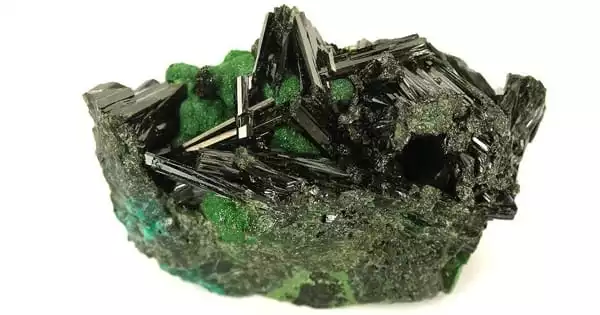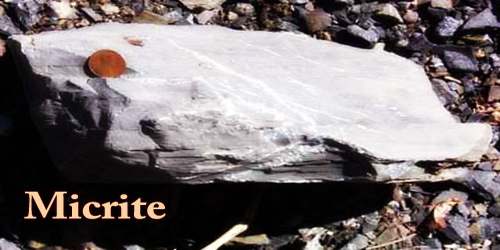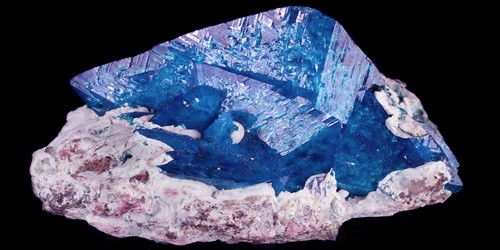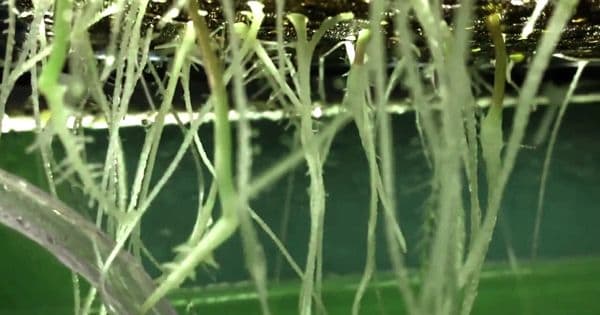Olivenite is a copper arsenate mineral with the chemical formula Cu2AsO4OH. It is a mineral that is olive green, dull brown, or yellowish in color and is made up of a basic arsenate of copper. It crystallizes in the monoclinic system and is occasionally found in small brilliant crystals with simple prismatic habits terminated by domal faces. It is most commonly found as globular aggregates of acicular crystals, with these fibrous forms having a velvety luster; it can also be lamellar in structure, or soft and earthy.
It was named after its common appearance as an olive-green mineral. It is the most common secondary copper arsenate in hydrothermal copper deposits’ oxidized zone.
General Information
- Category: Arsenate minerals
- Formula (repeating unit): Cu2AsO4OH
- Crystal system: Monoclinic
- Crystal class: Prismatic (2/m)
- Color: Olive green to yellow or brown, gray-green, grayish white
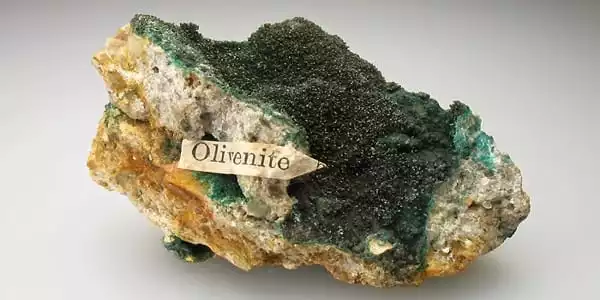
Properties
It is a mineral, basic copper arsenate, that occurs in crystals and masses and is typically olive-green in color. The olive-green color, which varies in shade from blackish-green in the crystals to almost white in the finely fibrous variety known as woodcopper, is a distinguishing feature, and one to which the name alludes. The specific gravity is 4.3 and the hardness is 3.
- Crystal habit: Fibrous, globular and reniform; granular, earthy, massive
- Fracture: Conchoidal to irregular
- Mohs scale hardness: 3
- Luster: Adamantine to vitreous, pearly to silky if fibrous
- Streak: Olive-green to brown
- Diaphaneity: Translucent to opaque
- Specific gravity: 4.46
- Optical properties: Biaxial (+/-)
The arsenic in olivenite is sometimes partially replaced by phosphorus, and the corresponding copper phosphate Cu2PO4OH exists in the species libethenite. This is found in the Slovak Republic as small dark green crystals resembling olivenite at ubietová, and in small amounts in Cornwall. Adamite, Zn2AsO4OH, and eveite, Mn2AsO4OH, are also members of this isomorphous group of minerals.
Occurrences
Olivenite is a supergene mineral that can be found in any weathered copper-arsenic-bearing primary association but is most commonly found in the oxidized zones of chalcopyrite and arsenopyrite-bearing hydrothermal veins. Other arsenates found with it include clinoclase, tyrolite, chalcophyllite, scorodite, and pharmacosiderite.
The mineral was previously found in some abundance, along with limonite and quartz, in the upper workings of the copper mines of Cornwall’s St Day district, as well as near Redruth and in Utah’s Tintic Mining District. It is a secondary mineral formed by the oxidation of copper ores and arsenopyrite.
Most notable localities include Majuba Hill, Nevada; Tsumeb; Tintic district, Utah; Cornwall, England. Other localities include France, Germany, Greece, Morocco, Namibia, and Chile among many others.
